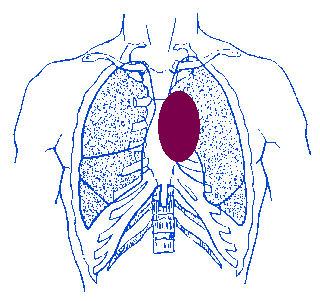|
Stage III Lung Cancer includes IIIA which is potentially still resectable but unfavorable, and Stage IIIB which is generally unresectable. As noted in the section on survival patients with obvious spread to the mediastinal nodes (N2) have a much worse prognosis than those whose nodes are found incidentally to have metastases after being resected. The definition of the TNM system
includes: T1: A tumor that is 3 cm or less, T2: A tumor with any of the following features
of size or extent: More than 3 cm in greatest dimension,Involves the main bronchus, 2 cm
or more distal to the carina, Invades the visceral pleura Associated with atelectasis or
obstructive pneumonitis that extends to the hilar region but does not involve the entire
lung. T3: A tumor of any size that directly invades any of the following: chest wall
(including superior sulcus tumors), diaphragm, mediastinal pleura, parietal pericardium;
or tumor in the main bronchus less than 2 cm distal to the carina but without involvement
of the carina; or associated atelectasis or obstructive pneumonitis of the entire lung T4:
A tumor of any size that invades any of the following: mediastinum, heart, great vessels,
trachea, esophagus, vertebral body, carina; or separate tumor nodules in the same lobe; or
tumor with a malignant pleural effusion |

